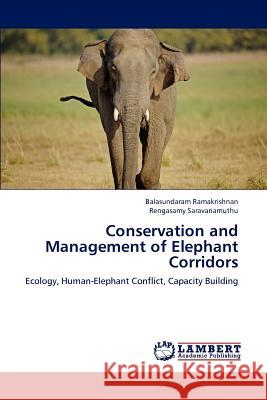Conservation and Management of Elephant Corridors » książka
Conservation and Management of Elephant Corridors
ISBN-13: 9783659124686 / Angielski / Miękka / 2012 / 208 str.
"Forest corridors" can be defined as the 'narrow strips of forests connecting two habitats that facilitate major functions such as exchange of genes between populations, dispersal, provide access to variety of seasonal foraging grounds, and prevention of faunal collapse'. Although need of the corridors for the Asian elephants has been reported by some earlier studies, the significance of the corridors to elephants has not been fully recognized. In this situation, investigation on the various aspects of corridors become essential and it is appropriate and indispensable to develop a management plan to enhance the smooth functioning of the corridors for the sustainability of this species. The book encompasses five chapters. The first chapter on the corridor's habitat quality in relation to the elephant use pattern, The second chapter deals with the anthropogenic pressures, The third chapter deals with human-elephant conflict issues and its economic implications, The fourth chapter deals with the mindset of the local people in adopting various mitigating measures and the fifth chapter deals with the capacity building for the forest field staff.
"Forest corridors" can be defined as the narrow strips of forests connecting two habitats that facilitate major functions such as exchange of genes between populations, dispersal, provide access to variety of seasonal foraging grounds, and prevention of faunal collapse. Although need of the corridors for the Asian elephants has been reported by some earlier studies, the significance of the corridors to elephants has not been fully recognized. In this situation, investigation on the various aspects of corridors become essential and it is appropriate and indispensable to develop a management plan to enhance the smooth functioning of the corridors for the sustainability of this species. The book encompasses five chapters. The first chapter on the corridors habitat quality in relation to the elephant use pattern, The second chapter deals with the anthropogenic pressures, The third chapter deals with human-elephant conflict issues and its economic implications, The fourth chapter deals with the mindset of the local people in adopting various mitigating measures and the fifth chapter deals with the capacity building for the forest field staff.











